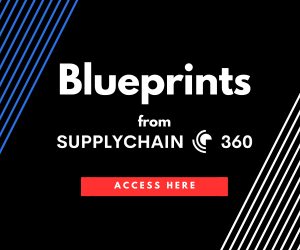The automotive aftermarket has cracked the code on building data-driven supply chain ecosystems. For CSCOs seeking ROI on digital transformation, the lesson is clear: focus on data, transparency, and solving key business challenges.
As industries race to digitize their supply chains, many Chief Supply Chain Officers (CSCOs) are hitting familiar roadblocks: fragmented organizational silos, inaccessible data, and outdated technologies. Meanwhile, the $535 billion automotive aftermarket has quietly emerged as a model for leveraging data to create connected ecosystems that benefit all stakeholders—from manufacturers to end customers.
Here’s what supply chain leaders across industries can learn from this innovative sector.
Data Standards: The Foundation of Ecosystem-Wide Collaboration
At the heart of the automotive aftermarket’s success is its adoption of industry-wide data standards, such as the Aftermarket Catalog Exchange Standard (ACES) and the Product Information Exchange Standard (PIES). These frameworks ensure compatibility and streamline the flow of accurate product information across the supply chain.
For CSCOs struggling with fragmented or unreliable data, establishing similar standards is critical. Industry associations or buying groups can collaborate to create a shared foundation for data collection, normalization, and dissemination. This step lays the groundwork for building “data factories” that transform raw information into actionable insights, enabling better forecasting, inventory management, and customer experience.
Transparency Drives Competitive Advantage
Data hoarding is a natural but counterproductive instinct in many organizations. The automotive aftermarket demonstrates the immense value of sharing data across the supply chain. Transparency enables:
- Customer-Centric Solutions: Predictive maintenance services leverage shared data to provide hyper-relevant recommendations based on local trends, weather, and historical patterns, enhancing customer satisfaction.
- Operational Efficiency: Insights into repair patterns help manufacturers optimize production and distribution, reducing waste and avoiding costly stockouts.
Organizations that embrace transparency position themselves as indispensable participants in their ecosystems. Those who opt out risk being left behind as competitors gain visibility and deliver superior customer experiences.
Emerging Technologies Unlock New Possibilities
AI and machine learning are expanding the potential of data-driven ecosystems. The automotive aftermarket’s future could include:
- Smart Vehicles: Cars that monitor their own maintenance needs and schedule service appointments autonomously.
- AI-Optimized Operations: ERP systems powered by machine learning to streamline inventory management, order processing, and predictive analytics with minimal human intervention.
For other industries, integrating AI into digital transformation initiatives can lead to similar breakthroughs. Start with specific, high-impact use cases, such as predictive inventory planning or dynamic pricing strategies, to see immediate ROI.
A Playbook for CSCOs
The automotive aftermarket offers a blueprint for supply chain leaders aiming to deliver meaningful ROI from digital transformation:
- Start with Data: Establish industry-wide data standards and invest in systems to make information usable and actionable.
- Embrace Transparency: Share data across the supply chain to unlock collaborative opportunities and gain ecosystem-wide benefits.
- Focus on Key Problems: Direct digital initiatives toward solving the most pressing challenges, whether that’s improving forecasting, reducing lead times, or enhancing customer service.
- Leverage Advanced Technologies: Pilot AI and machine learning tools in targeted areas to maximize operational efficiency and innovation.
The automotive aftermarket’s journey demonstrates that connected, data-driven ecosystems aren’t just a lofty goal—they’re an achievable reality. By applying these lessons, CSCOs can overcome silos, harness the power of data, and create supply chains that deliver measurable results.








